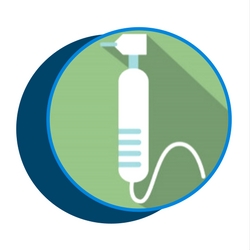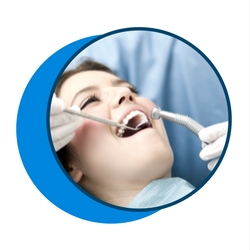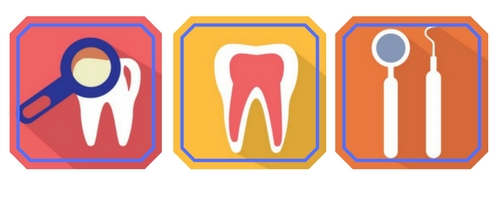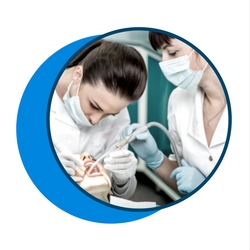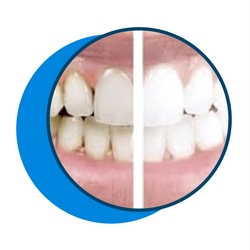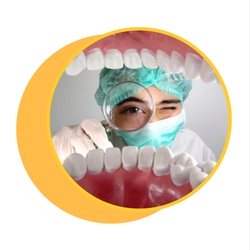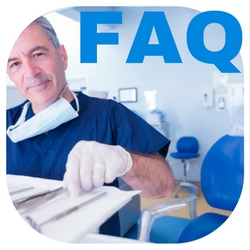Prophylaxis Dental – What It Is And Why It’s Important
Because prophylaxis dental isn’t the most common of dental terms, a lot of people overlook it. Either that, or they have no clue what it is, why it’s important, and what it consists of in general. Unfortunately, this poses a major problem for patients, which is why we’re going to clear things up.
If you are currently facing a dental emergency, whether it be an abscessed tooth or another instance, you can use our 24/7 dentist hotline to get immediate help. Our hotline is free, offers fast service and is easy to use.
What is Prophylaxis Dental?
Prophylaxis dental is the more technical term for getting your teeth cleaned at the dentist. Basically, prophylaxis dental is a basic cleaning procedure that cleans your teeth as thoroughly as possible.
It’s extremely important to have done twice per year at the bare minimum, your dentist may recommend additional cleanings based on your individual patient profile, however.
“Dental prophylaxis is essential because the bottom line is that, no matter how well you brush and floss, there are simply some things you cannot remove from your teeth on your own. This is where dental hygienists with specialized tools and training come in.”
Why is Prophylaxis Dental So Important?
Prophylaxis dental is your first line of defense when it comes to waging a war against the start and further progression of multiple oral ailments, including both gingivitis and periodontal disease, for example.
It’s one of the most important dental treatments that stop a problem before it can even start. The overall health of your oral cavity, more often than not, relies on whether or not you are getting routine cleanings done.
If you’re still not all that convinced, maybe the bountiful list of benefits that prophylaxis dental offers on a short and long-term basis.
How Does Prophylaxis Dental Work?
Even though you may not notice this process while you’re having it done on your mouth, there are actually a lot of different stages that go into it. The process and the stages also depend on whether or not you have been diagnosed with having periodontal issues, including periodontal disease.
If this is the case, the first step may be some general anesthesia and an endotracheal tube that is inserted into the throat for the protection of the lungs against any harmful bacteria that is going to be removed from the mouth.
Supragingival Cleaning Stage
Your dentist will clean the area above the plaque and tartar from the line of the gum thoroughly using scaling tools.
Subgingival Cleaning Stage
Your dentist will then remove any present tartar and bacteria that have made their way into the pockets of the gums and beneath the line of the gums, which is especially important if the patient is currently experiencing any form of periodontal disease.
Root Planing Stage
Your dentist will now smooth the root of the tooth for the purpose of eliminating any of the bacteria that could have somehow stayed behind. This stage is extremely important because, during the initial removal of the bacteria, some of it could have broken up into small, minuscule amounts and stayed hidden previously.
This is also extremely important because any amount of bacteria left behind, no matter how small of an amount, makes patients with existing periodontitis and periodontal diseases at a higher risk than ever.
Therefore, eliminating every possible threat, no matter how small, is critical for the patient. Your dentist may take a very long time with this stage of the treatment to ensure that every piece of bacteria is removed successfully.
The Medication and X-Ray Stage
Once a full prophylaxis dental procedure has been completed on a patient, it’s very common for a dentist to then use an antimicrobial or antibiotic cream that is placed within the pockets of the gums.
These types of oral medications help to promote a fast, healthy process of healing within the pockets of the gums, especially if they are very deep, and to help the patient have a comfortable recovery process.
If need be, a routine x-ray may also be required to ensure that everything is working. If you are suffering from a progressed cased of periodontal disease, your dentist will most likely have you do a dental x-ray before this process can actually begin.
The before and after shots taken of your mouth will show how badly your recession is with the gums and teeth, how well they are healing up after the procedure, and whether or not you will need future attention based on what your dentist is able to identify from the results of your x-rays.
Signs and Symptoms of Needing a Prophylaxis Appointment
Just because you’re supposed to be going to your dentist every 6 months for a good cleaning, does not mean that should be strictly when you go. Sometimes going for an extra cleaning, or more, is necessary.
Listed below are signs and symptoms letting you know that it’s time to book a prophylaxis appointment:
• Receding gums – gums that are moving away from the teeth
• A constant bad taste in your mouth
• Bad breath that never seems to go away, even with persistent brushing
• Swollen, tender, red, and/or bleeding gums
• Loose teeth or the feeling that they’re becoming “unhinged”
• Pus visibly surrounding the gums and the teeth, even in very small amounts
If you are experiencing any of these signs and symptoms, it’s important that you call your dentist to make an appointment as soon as you possibly can.
The Many Benefits of Prophylaxis Dental
While most patients understand that regular prophylaxis dental sessions are very important for the health of your mouth, it’s still ideal to understand what the benefits to having regular appointments each year done.
Fighting Periodontal Disease and Halitosis
Periodontal disease is often identified and signified by the majorly embarrassing symptom of halitosis, which is when a patient persistently has bad breath that won’t go away easily.
This is caused by food particles rotting below the line of the gum line that can turn into gangrene from a serious infection and other periodontal issues.
Though periodontal disease can be very common, it’s nothing to take lightly. Inflammation and irritation are what you will begin to experience, followed by a more chronic inflammatory response within the body.
Next, your body will systematically destroy the tissue of the bones and gums, cause your teeth to shift and become unstable, and possibly even fall out as a major result. If nothing is done after this, even though the loss of teeth seems like the end, the pockets located between the teeth and the gums will deepen and become a home for thriving bacteria.
Once this happens, the bacteria will spread throughout the body. The bloodstream, for example, is the major pathway to the rest of the body and the organs, which is where this particular bacteria will be headed for to a serious, critical infection.
Irritation is alleviated and fresh breath is made possible through the removal of calculus, bacteria, and plaque once a patient has had a prophylaxis dental session done with their dentist. Periodontal disease can be critical, near fatal, to the human body, especially if tartar is involved, which brings us to our next major benefit.
Destruction of Any Tartar Present
Everyone has heard of tartar more than they realize. A lot of the brands of toothpaste that is in every household promote the removal of tartar in the paste that we use to brush our teeth on a, hopefully, daily basis.
Tartar is the buildup of plaque and calculus, which accumulate very easily below the line of our gums. A case of progressed tartar causes a lot of very serious periodontal problems if it isn’t removed or treated in general.
Unfortunately, even though many kinds of toothpastes are designed with tartar removal in mind, even the best brushers and flossers can’t get all of it. Once it gets into the pockets of the gums, no amount of oral hygiene practices at home can stop tartar from accumulating now.
In this case, you’re going to need a dentist and a thorough cleaning to treat the areas where tartar has built up the most. Keep in mind that a little tartar will eventually go a very long way, and that even a small buildup can turn into a serious problem if prophylaxis dental is avoided.
The Early Identification of Potential Health Issues
The oral cavity is one of the most amazing parts of the human body for many reasons, one of which being a window to the overall health of the rest of the body. Because a regular cleaning goes through the entire mouth.
One of the many things dentist look for during a prophylaxis cleaning is any sign of oral cancer, whether or not periodontitis is present or beginning, diabetes, and problems with the kidneys.
During this treatment/procedure, your dentist will also be able to tell you what’s working, or what isn’t working, when it comes to your oral health home regimen. This is also very important because you will know what you need to be doing, what needs more work, etc.
A lot of oral health issues that have either turned into a full body problem, or one that is going to result in this further down the line, can be identified by simply going to the dentist and having your teeth cleaned.
The Value of Aesthetics
Having a stained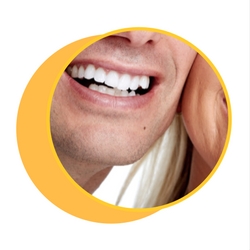
Something as simple and as small as yellowed teeth makes all the difference in patient’s confidence levels, which is why this benefit is such a huge one.
What’s more, surface stains can become permanent if they are left to set into the teeth over a long period of time. However, with regular cleanings, any surface stains present can be immediately reversed before they become a serious problem and leave the teeth a mess for good.
Thankfully, even if surface stains have time to set in, if a patient is active with regular cleanings, they will begin to lessen and even disappear entirely over the same amount of time.
Find a Dentist in Your Area
With the technology of today, finding a dentist in your area is easier than ever. There are a number of online search directories that can help you find a dentist that specializes in what you need and is within reasonable traveling distance.
Listed below are some of the best directories that help you to find a dentist in your area:
• American Dental Association (ADA) Find-a-Dentist
• National Directory of Dentists LLC
• Colgate Oral Care Center
• TopDentists LLC Directory
• Delta Dental Network Search
• PPO USA Dental Network Search
• Dental Plans Dentist Finder
• 1-800-Dentist Search Directory
When to See An Emergency Dentist
If you have been diagnosed with periodontal disease, or any other oral ailment in general, and feel that you are having a dental emergency, you will need to find an emergency dentist as soon as possible.
Fortunately, if you are in need of an emergency dentist for whatever reason, and not just one that is related to prophylaxis dental, we can help you.
Our 24/7 dentist hotline not only includes regular dentists, but emergency dentists that are within a reasonable distance of your location, on site, and ready to help.
Prophylaxis Dental FAQ
If you have a question on prophylaxis dental and are not seeing it within our FAQ section, feel free to get in touch with us and we’ll give you all the answers you seek.
How often should I have my dentist clean my teeth?
Ordinarily, you will need to see your dentist at least twice every year to have your teeth cleaned. However, your dentist may recommend that you come in for more cleanings in a single year based on your individual dental profile.
For example, if you have periodontal disease that has already progressed to an advanced or critical stage, your dentist will more than likely recommend a strict serious of cleanings that exceed the twice per year rule, or will recommend that you come in for a cleaning more frequently.
What is plaque?
Plaque is a substance that is practically invisible to the human eye. It’s very sticky and thrives on food debris, saliva, and bacteria that never stops growing in size. It produces and releases a toxic, poisonous substance that infiltrates and inflames the gums. From there, periodontal disease is able to take hold of your mouth.
What is periodontal disease?
In short, periodontal disease, which includes gingivitis, is an oral infection that surrounds and destroys the tissues and supportive bones of your teeth. If left untreated for a long period of time, it ravages the mouth and can cause tooth loss and serious infections within the blood and other areas of the body.
What are the symptoms of periodontal disease?
For the purpose of gradually checking your oral health at home between visits to your dentist, the following signs and symptoms are most commonly seen in patients who are experiencing any degree of periodontal disease:
• Tender, swollen, red, and/or bleeding gums
• A toothache in one or more teeth
• Receding gums
• The feeling that your teeth in one or more areas are relatively loose
• Tooth loss
If you are currently dealing with any of these signs and symptoms of periodontal disease, or have a feeling that something is wrong with your oral health, make an appointment with your dentist as soon as possible.
Is periodontal disease reversible?
In short, periodontal disease, unfortunately, cannot be fully cured or reversed. The only thing that can help a patient when they have periodontal disease is proper oral hygiene practices at home, regular visits to their dentist, and preventive methods that ensure that the periodontal disease cannot become more advanced and destroy the patient’s mouth.
The long answer to this question, if desired, is explained below for you:
Periodontal disease is broken down into periodontitis and gingivitis. The first affects the gums, bone, and ligaments of the mouth, all of which are responsible for the teeth staying right where they are in the mouth. It’s irreversible but is able to be controlled through scaling, root planning, and regular maintenance with your dentist through appointments scheduled up to every 4 months instead of every 6.
Unfortunately for patients who are diagnosed with periodontitis, they are further automatically diagnosed with periodontal disease for the remainder of their lives due to the fact that there is a high potential for bone and ligament loss, even if that hasn’t had a chance to start, both of which cannot be regrown.
Gingivitis, however, only affects a patient’s gums. This is good news, even though the diagnosis is not, because the bone and the ligaments are not affected and the gums are able to be repaired.
Gingivitis can be caused by poor oral hygiene at home, not visiting the dentist as they should be, smoking, certain health conditions that lower the immune response of the body, or even being on an unhealthy diet. When a number of these factors are combined, however, it can worsen the gingivitis considerably.
No matter how large and deep the pockets of the gums may be as a result of the gingivitis, it’s something that can be repaired over a period of time.
How is periodontal disease measured in a patient?
Periodontal disease is measured in an individual patient from a dentist using a periodontal probe, which is used to measure the overall attachment level of the bone and the ligament that surrounds a single tooth.
The probe is placed between the tooth and the surrounding gum as far as it can go to measure whether or not periodontal disease is present and how advanced it may be.
A healthy, free of disease mouth should have a measurement of 1 to 3 mm below the line of the gum. Another problem indicator is the amount of time it takes for your dentist to probe your entire mouth. For example, a healthy mouth should take no more than 2 to 3 minutes to probe, while unhealthy, potentially diseased mouths can take up to 5 minutes to probe.
The following points explain the severity of periodontal disease and how it’s gauged:
• Healthy gums – 1 to 3 mm
• Mild periodontitis – 3 to 5 mm
• Moderate periodontitis – 5 to 7 mm
• Severe periodontitis – 7 mm and beyond
Naturally, the space that is being measured by the probe will have a pocket that’s small enough for the instrument. This ensures that any discomfort will be minimal when the measuring is taking place.
The front, back, and sides are all measured for each tooth for the purpose of making sure that the gums of the patient are healthy in every direction and angle.
Though this is not a practice that a lot of patients are aware of, it’s something that is very important to ensure that periodontal disease is detected early on, or that the damage can be assessed as soon as possible and how far gone it’s going.
What is a cavitron?
A cavitron is a dental tool that is frequently used for cleaning a patient’s mouth. It’s a more improved method compared to a standard scaler, mainly because it’s an ultrasonic scaler, that uses a flow of water and a number of high-frequency vibrations.
It works by removing the largest areas of bacteria, plaque, tartar, etc., through flushing along and below the gum line with water while using the vibrations on the surfaces of the teeth.
Because it only removes the larger areas of the buildup, and it’s not all that effective on the more complicated areas where the remaining buildup can hide, it’s typically used alongside regular scalers to ensure the procedure is a complete success.
What is Prophylaxis Dental, Why Have it Done?
Now that you know why this procedure that is so often overlooked but is so important to have done at least twice per year, you’ll no doubt be rushing to your next appointment.
Lastly, remember that no matter what your need may be, whether it be a regular dentist or an emergency dentist, call our 24/7 dentist hotline for fast, free, and immediate help with locating the closest dentist in your area.
Medically Fact-Checked & Written by Our Dental Editorial Team
You can read more about our editorial guidelines by clicking this link and learn more about the Emergency Dentists USA editorial team here.


